With an estimate of +- 8.7 million species, it is no wonder that we have so many beautiful creatures on this planet. With many species still not discovered, these photos reminds us of how awesome mother nature is and why we have to make it our priority to look after her.
The sad reality is that scientists estimate that between 150 and 200 species of life become extinct every 24 hours! This mass extinction is due, in large measure, to humankind’s unsustainable methods of production and consumption, including the destruction of habitats, expanding cities, pollution, deforestation, global warming and the introduction of “invasive species”.
Scotoplanes live on deep ocean bottoms, specifically on the abyssal plain in the Atlantic, Pacific and Indian Ocean, typically at depths of over 1000 meters. They are deposit feeders, and obtain food by extracting organic particles from deep-sea mud.

This mammal is native to the Democratic Republic of the Congo in Central Africa. Despite the zebra-like stripes, it is actually more closely related to giraffes.

Colored in camouflaging shades of desert browns, this lizard has a “false” head, which he presents to his predators by dipping the real one.
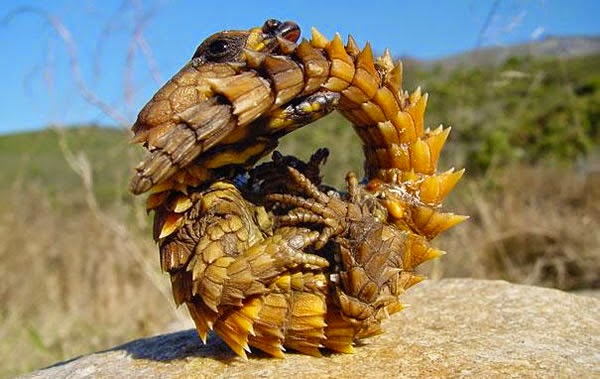
This large stork-like bird gets its name because of the shape of its beak. Even though it was already known to ancient Egyptians and Arabs, the bird was only classified in the 19th century.

Found in India, this species of frog have a bloated body and an unusually pointy snout; it only spends two weeks a year on the surface of earth, leaving the underground for mating.
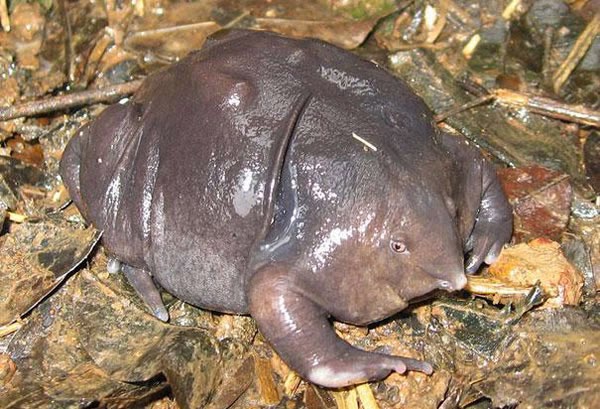
This bright blue fish can be found in the waters of the Atlantic Ocean, and spends 80% of its time searching for food.

Being a carnivore predator, the Bush Viper lives up in the trees of the tropical forests of Africa, and does most of its hunting at night.
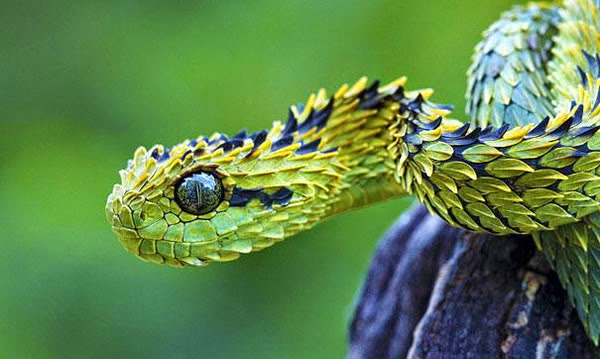
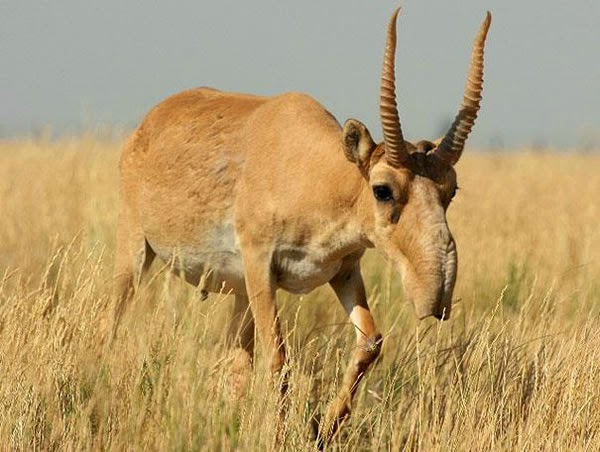
Also known as the blue dragon, this creature is a species of blue sea slug. You can find it in warm waters of the oceans. it normally floats on the surface because of a gas-filled sac in its stomach.
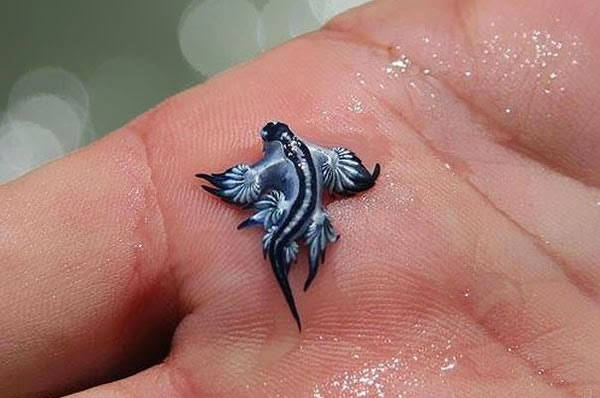
You probably don’t need much explanation as to why the residents of Papua New Guinea call this fish a “ball cutter.” The local fishermen were really worried about the safety of their testicles when they had to get in the water!

Discovered in Venezuela in 2009, this new species of alien-looking moth is still poorly explored. Waiting for more info about them!

As this hawk-moth feeds on flowers and makes a similar humming sound, it looks a lot like a hummingbird. What’s interesting is that it is surprisingly good at learning colors.

Also called the “sea locusts“, “prawn killers” and even “thumb splitters”, this is one of the most common predators in tropical and sub-tropical waters; little is known about them because of how much time they spend hiding in their burrows.

These thorn bugs are related to cicadas, and use their beaks to pierce plant stems to feed upon their sap. Their strange appearance still poses many questions to scientists.
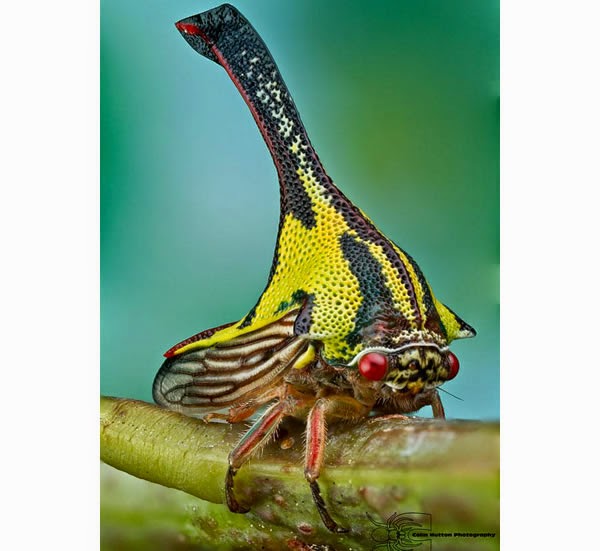
This, uhm… peculiar eyeless animal is actually called Atretochoana eiselti. It is a large, presumably aquatic, caecilian amphibian with a broad, flat head and a fleshy dorsal fin on the body.

The Mutillidae are a family of more than 3,000 species of wasps (despite the names) whose wingless females resemble large, hairy ants. Found in Chile, they are known for their extremely painful stings, hence the common name cow killer or cow ant. Black and white specimens are sometimes known as panda ants due to their hair coloration resembling that of the Chinese giant panda.

Goblin sharks inhabit around the world at depths greater than 100 m (330 ft), with adults found deeper than juveniles. Given the depths at which it lives, the goblin shark poses no danger to humans.

Found on the Galapagos Islands, this fish is actually a pretty bad swimmer, and uses its pectoral fins to walk on the bottom of the ocean.

The Dhole is a species of canid native to South and Southeast Asia. The dhole is a highly social animal, living in large clans which occasionally split up into small packs to hunt. It primarily preys on medium-sized ungulates, which it hunts by tiring them out in long chases, and kills by disemboweling them. Though fearful of humans, dhole packs are bold enough to attack large and dangerous animals such as wild boar, water buffalo, and even tigers.
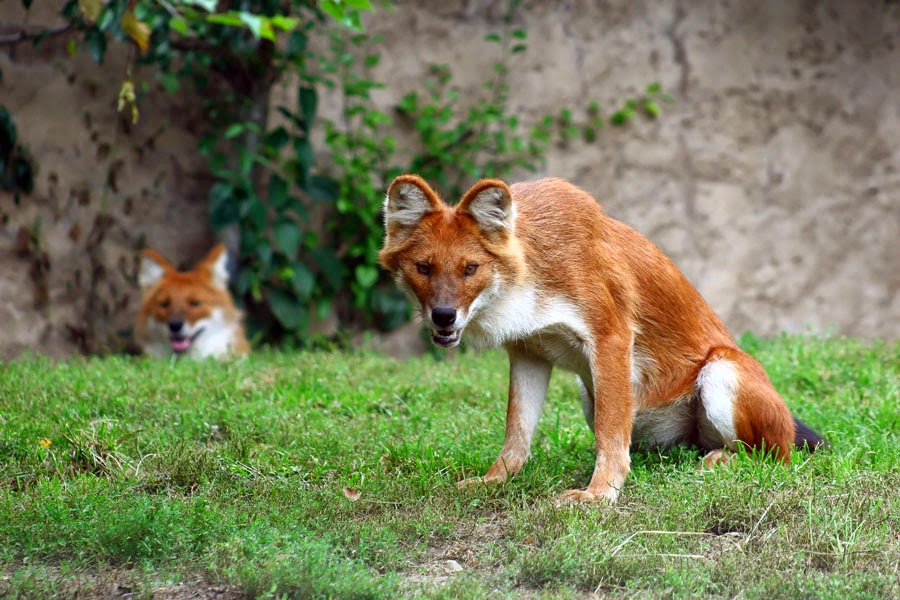
Babirusa, meaning “Hog-deer”, are members of the pig family found in Wallacea, or specifically the Indonesian islands of Sulawesi, Togian, Sula and Buru. If a babirusa does not grind its tusks (achievable through regular activity), they will eventually keep growing so as to penetrate the animal’s own skull.
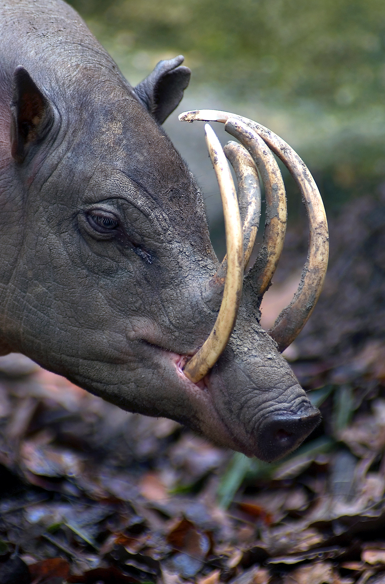
The pink fairy armadillo is approximately 3.5-4.5 inches long, excluding the tail, and is pale rose or pink in color. It has the ability to bury itself completely in a matter of seconds if frightened. It is a nocturnal animal and it burrows small holes near ant colonies in dry soil, and feeds mainly on ants and ant larvae near its burrow. It uses large front claws to agitate the sand, allowing it to almost swim through the ground like it is water. It is torpedo-shaped, and has a shielded head and back.
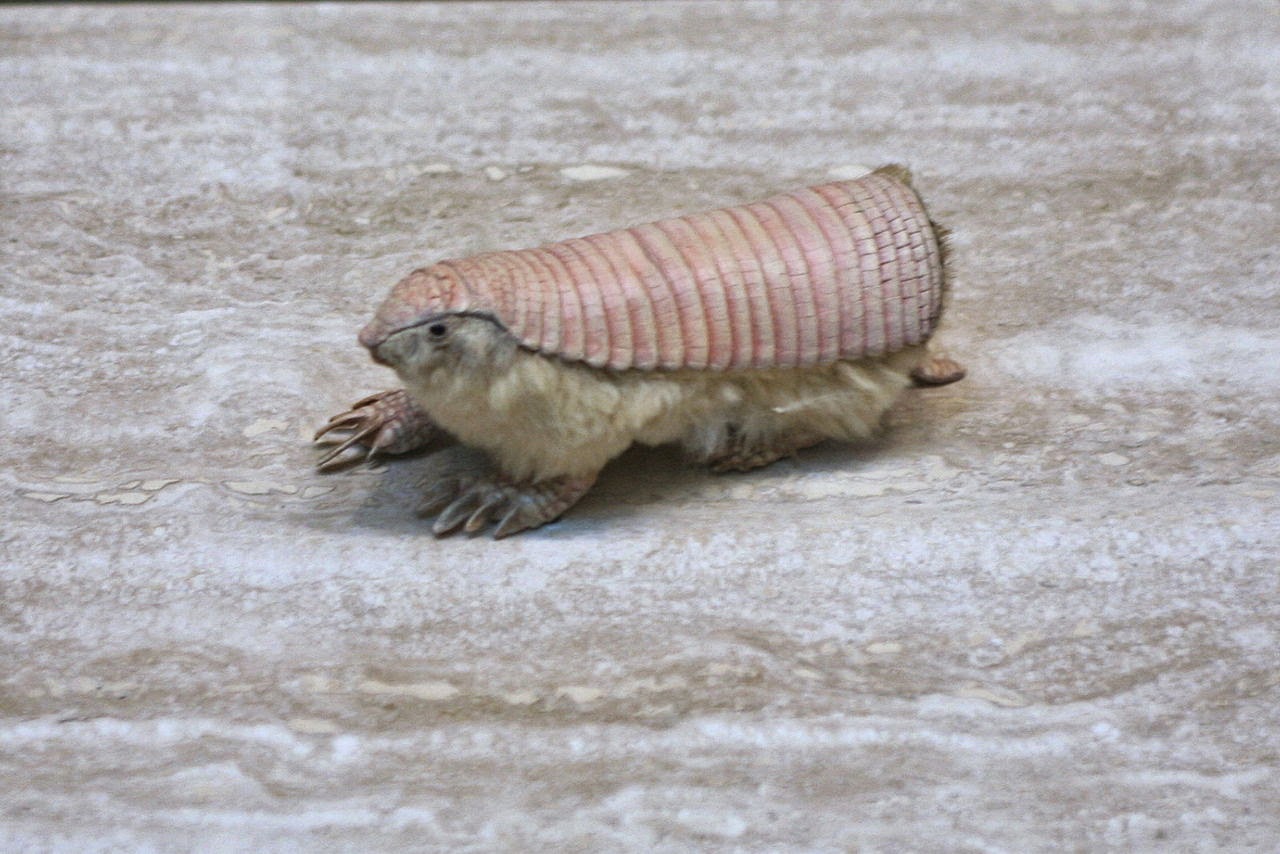
The fossa is a cat-like, carnivorous mammal that is endemic to Madagascar. The fossa is the largest mammalian carnivore on the island of Madagascar and has been compared to a small cougar. It has semi-retractable claws and flexible ankles that allow it to climb up and down trees head-first, and also support jumping from tree to tree.
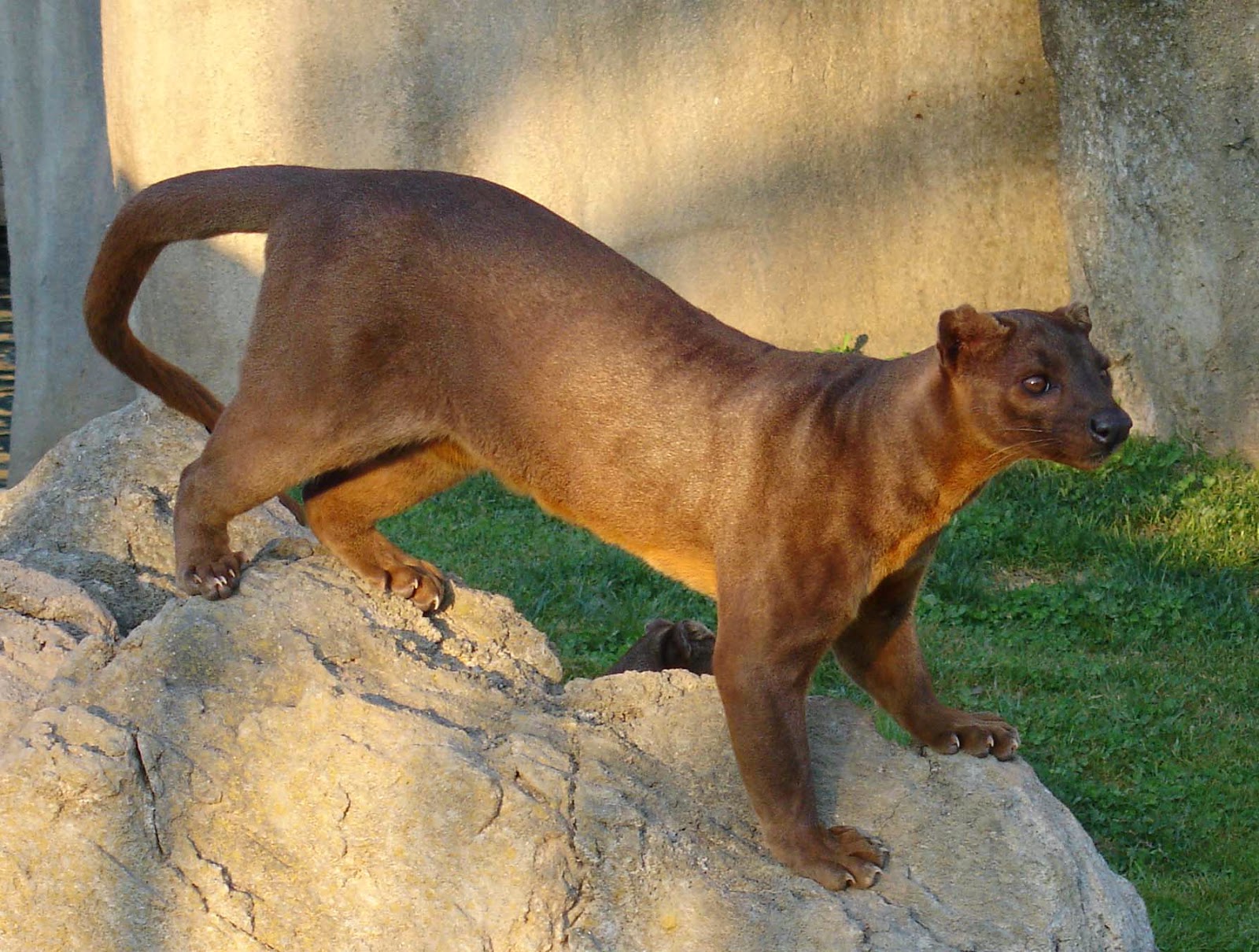

The gerenuk, also known as the Waller’s gazelle, is a long-necked species of antelope found in dry thorn bush scrub and desert in Eastern Africa. The word gerenuk comes from the Somali language, meaning “giraffe-necked”. Gerenuks have a relatively small head for their body, but their eyes and ears are proportionately large. Gerenuks seldom graze but browse on prickly bushes and trees, such as acacias. They can reach higher branches and twigs than other gazelles and antelope by standing erect on their rear legs and stretching their elongated necks.
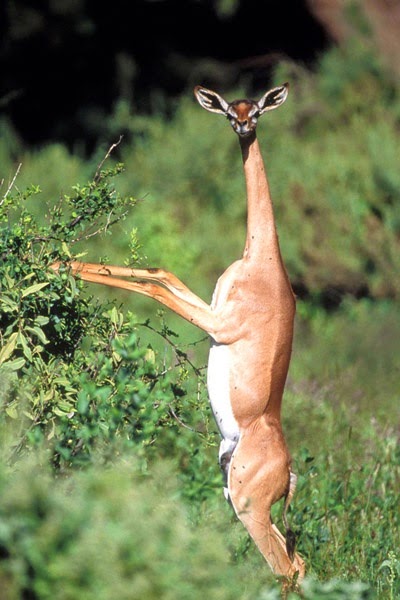
This creature has a lot of characteristics that make it very important to human beings. For one it is resistant to cancer. They also live up to 28 years, which is unheard of in mammals of its size. It seemingly does not age much in those 28 years either. It remains “young, healthy and fully fertile for almost all its days, which for an elderly animal is equivalent to an 80-year-old woman having the biological make-up of someone 50 years younger.” The naked mole rat is used in both cancer research and the study of aging. Not only making it a bizarre creature, but an incredibly important creature as well.
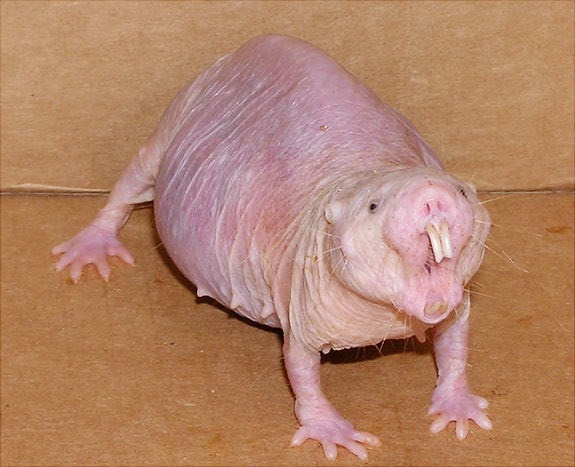
The Irrawaddy dolphin is a species of oceanic dolphin found near sea coasts and in estuaries and rivers in parts of the Bay of Bengal and Southeast Asia. Genetically, the Irrawaddy dolphin is closely related to the killer whale.
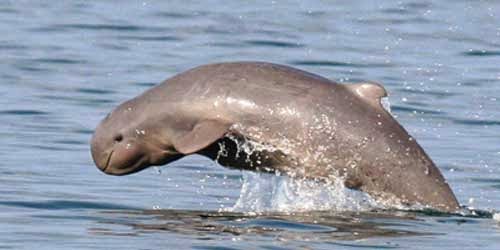

The markhor is a large species of wild goat that is found in northeastern Afghanistan and Pakistan. The species is classed by the IUCN as Endangered, as there are fewer than 2,500 mature individuals. The markhor is the national animal of Pakistan. While chewing the cud, a foam-like substance comes out of its mouth which drops on the ground and dries. This foam-like substance is sought after by the local people, who believe it is useful in extracting snake poison from snake bitten wounds.
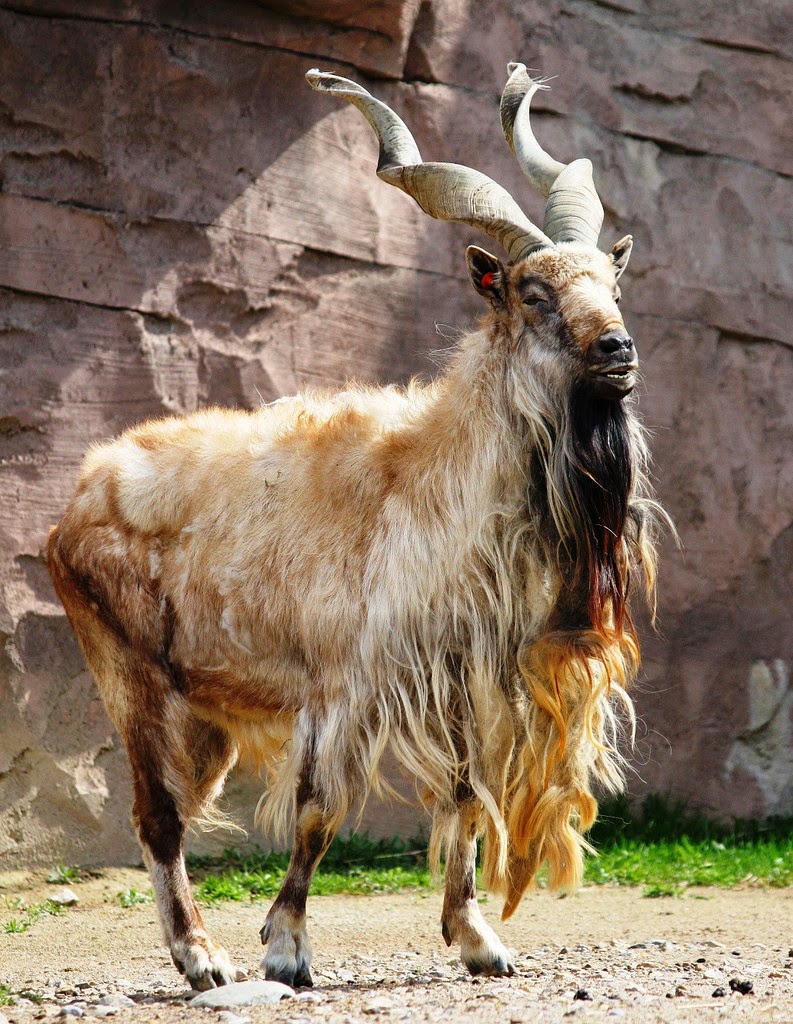
Also known as the Kiwaidae, this crab is a type of marine decapod living at deep-sea hydrothermal vents and cold seeps. The animals are commonly referred to as “yeti crabs” because of their claws and legs, which are white and appear to be furry like the mythical yeti

Snub-nosed monkeys live in various parts of Asia and get their name from the short stump of a nose on their round face. Snub-nosed monkeys inhabit mountain forests, in the winter moving into deeply secluded regions. They spend the majority of their life in the trees and live together in very large groups of up to 600 members. They have a large vocal repertoire, calling sometimes solo while at other times together in choir-like fashion.

The Maned Wolf is the largest canid in South America, resembling a large fox with reddish fur. This mammal is found in open and semi-open habitats, especially grasslands with scattered bushes and trees throughout South America. The maned wolf is the tallest of the wild canids and it’s long legs are most likely an adaptation to the tall grasslands of its native habitat.


The southern right whale dolphin is a small and slender species of mammal found in cool waters of the southern hemisphere. They are fast active swimmers and have no visible teeth and no dorsal fin. They are very graceful and often move by leaping out of the water continuously

Found in south Asia, it has soft, short, brownish or greyish hair and is omnivorous, feeding on grass, fruits, shoots, seeds, birds’ eggs as well as small animals. It sometimes even displays scavenging behavior, feeding on carrion. It gives calls similar to barking, usually upon sensing a predator. Males are extremely territorial and—despite their diminutive size—can be quite fierce. They will fight each other for territory using their antlers or their tusk-like upper canine teeth, and can even defend themselves against certain predators such as dogs.


It is a species of treehopper called Cyphonia Clavata that literally has an ant growing out of its head. Well not literally, the ant-like thing on its head is an appendage that hides the treehopper’s actual body from predators.

Also known as The Sunda flying lemur, it is not actually a lemur and does not fly. Instead, it glides as it leaps among trees. It is strictly arboreal, is active at night, and feeds on soft plant parts such as young leaves, shoots, flowers, and fruits. The Sunda Coluga can be found throughout Southeast Asia in Indonesia, Thailand, Malaysia, and Singapore

The Tufted Deer is a small species of deer characterized by the prominent tuft of black hair on its forehead. It is a close relative of the muntjac, living somewhat further north over a wide area of central China. It is a timid animal, mainly solitary or found in pairs and prefers places with good cover, where it is well camouflaged.

Lampreys are a type of jawless fish that live mostly in coastal and fresh waters whose adults are characterized by a toothed, funnel-like sucking mouth. They attach themselves to fish and suck their blood. Lampreys have been around for nearly 300 millions years and their body structure has remained relatively unchanged.

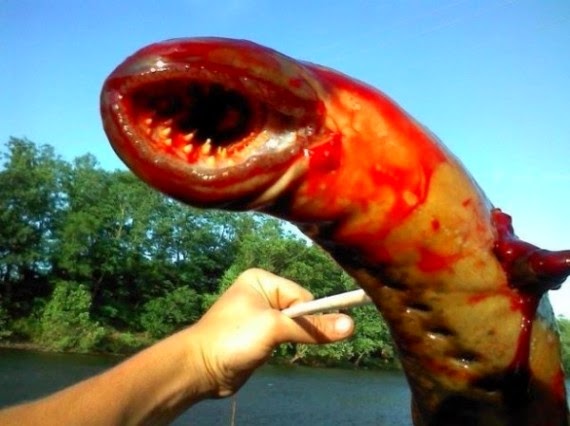
The Raccoon Dog, or Tanuki, is a canid indigenous to East Asia. The raccoon dog is named for its resemblance to the raccoon, to which it is not closely related. They are very good climbers and regularly climb trees.
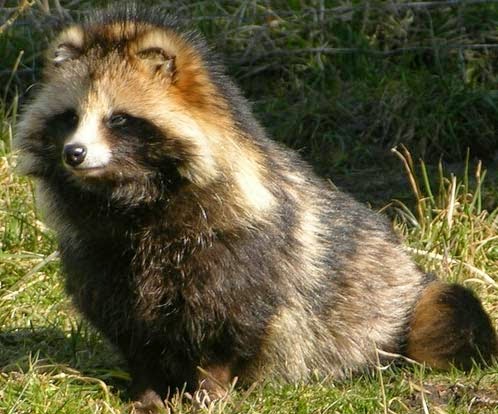

The Patagonian Mara is a relatively large rodent found in parts of Argentina. This herbivorous, somewhat rabbit-like animal has distinctive long ears and long limbs and its hind limbs are longer and more muscular than its forelimbs.

The Amazonian Royal Flycatcher is found in forests and woodlands throughout most of the Amazon basin. They are about 6 1/2 inches in length and like to dart out from branches to catch flying insects or pluck them from leaves. They build very large nests (sometimes up to 6 feet long) on a branches near water. The nest hangs over the water which makes it hard for predators to reach.

The zebra duiker is a small antelope found in Ivory Coast and other parts of Africa. They have gold or red-brown coats with distinctive zebra-like stripes (hence the name) Their prong-like horns are about 4.5 cm long in males, and half that in females. They live in lowland rainforests and mostly eat leaves and fruit.
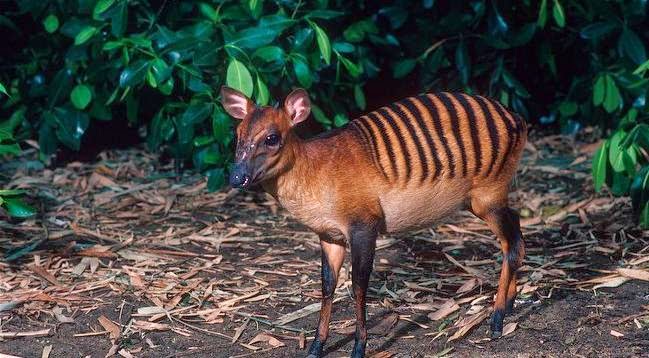
The star-nosed mole is a small mole found in wet low areas of eastern Canada and the northeastern United States. It is easily identified by the 11 pairs of pink fleshy appendages ringing its snout, which is used as a touch organ with more than 25,000 minute sensory receptors, known as Eimer’s organs, with which this hamster-sized mole feels its way around.

Sources: Imgur, True Activist
Please SHARE these awesome animals with your friends.
Related:
The sad reality is that scientists estimate that between 150 and 200 species of life become extinct every 24 hours! This mass extinction is due, in large measure, to humankind’s unsustainable methods of production and consumption, including the destruction of habitats, expanding cities, pollution, deforestation, global warming and the introduction of “invasive species”.
Sea Pig
Scotoplanes live on deep ocean bottoms, specifically on the abyssal plain in the Atlantic, Pacific and Indian Ocean, typically at depths of over 1000 meters. They are deposit feeders, and obtain food by extracting organic particles from deep-sea mud.

Okapi
This mammal is native to the Democratic Republic of the Congo in Central Africa. Despite the zebra-like stripes, it is actually more closely related to giraffes.

Thorny Dragon
Colored in camouflaging shades of desert browns, this lizard has a “false” head, which he presents to his predators by dipping the real one.

Shoebill
This large stork-like bird gets its name because of the shape of its beak. Even though it was already known to ancient Egyptians and Arabs, the bird was only classified in the 19th century.

Indian Purple Frog
Found in India, this species of frog have a bloated body and an unusually pointy snout; it only spends two weeks a year on the surface of earth, leaving the underground for mating.

The Blue Parrotfish
This bright blue fish can be found in the waters of the Atlantic Ocean, and spends 80% of its time searching for food.

The Bush Viper
Being a carnivore predator, the Bush Viper lives up in the trees of the tropical forests of Africa, and does most of its hunting at night.

The Saiga Antelope
This saiga, spread around the Eurasian steppe, is known for its an extremely unusual, over-sized, flexible nose structure, the proboscis.
Glaucus Atlanticus
Also known as the blue dragon, this creature is a species of blue sea slug. You can find it in warm waters of the oceans. it normally floats on the surface because of a gas-filled sac in its stomach.

The Pacu Fish
You probably don’t need much explanation as to why the residents of Papua New Guinea call this fish a “ball cutter.” The local fishermen were really worried about the safety of their testicles when they had to get in the water!

Venezuelan Poodle Moth
Discovered in Venezuela in 2009, this new species of alien-looking moth is still poorly explored. Waiting for more info about them!

Hummingbird Hawk-Moth
As this hawk-moth feeds on flowers and makes a similar humming sound, it looks a lot like a hummingbird. What’s interesting is that it is surprisingly good at learning colors.

Mantis Shrimp
Also called the “sea locusts“, “prawn killers” and even “thumb splitters”, this is one of the most common predators in tropical and sub-tropical waters; little is known about them because of how much time they spend hiding in their burrows.

Umbonia Spinosa
These thorn bugs are related to cicadas, and use their beaks to pierce plant stems to feed upon their sap. Their strange appearance still poses many questions to scientists.

Penis Snake
This, uhm… peculiar eyeless animal is actually called Atretochoana eiselti. It is a large, presumably aquatic, caecilian amphibian with a broad, flat head and a fleshy dorsal fin on the body.

The Panda Ant
The Mutillidae are a family of more than 3,000 species of wasps (despite the names) whose wingless females resemble large, hairy ants. Found in Chile, they are known for their extremely painful stings, hence the common name cow killer or cow ant. Black and white specimens are sometimes known as panda ants due to their hair coloration resembling that of the Chinese giant panda.

Goblin Shark
Goblin sharks inhabit around the world at depths greater than 100 m (330 ft), with adults found deeper than juveniles. Given the depths at which it lives, the goblin shark poses no danger to humans.

Red-lipped Batfish
Found on the Galapagos Islands, this fish is actually a pretty bad swimmer, and uses its pectoral fins to walk on the bottom of the ocean.

The Dhole
The Dhole is a species of canid native to South and Southeast Asia. The dhole is a highly social animal, living in large clans which occasionally split up into small packs to hunt. It primarily preys on medium-sized ungulates, which it hunts by tiring them out in long chases, and kills by disemboweling them. Though fearful of humans, dhole packs are bold enough to attack large and dangerous animals such as wild boar, water buffalo, and even tigers.

The Babirusa
Babirusa, meaning “Hog-deer”, are members of the pig family found in Wallacea, or specifically the Indonesian islands of Sulawesi, Togian, Sula and Buru. If a babirusa does not grind its tusks (achievable through regular activity), they will eventually keep growing so as to penetrate the animal’s own skull.

Pink Fairy Armadillo
The pink fairy armadillo is approximately 3.5-4.5 inches long, excluding the tail, and is pale rose or pink in color. It has the ability to bury itself completely in a matter of seconds if frightened. It is a nocturnal animal and it burrows small holes near ant colonies in dry soil, and feeds mainly on ants and ant larvae near its burrow. It uses large front claws to agitate the sand, allowing it to almost swim through the ground like it is water. It is torpedo-shaped, and has a shielded head and back.

The Fossa
The fossa is a cat-like, carnivorous mammal that is endemic to Madagascar. The fossa is the largest mammalian carnivore on the island of Madagascar and has been compared to a small cougar. It has semi-retractable claws and flexible ankles that allow it to climb up and down trees head-first, and also support jumping from tree to tree.


The Gerenuk
The gerenuk, also known as the Waller’s gazelle, is a long-necked species of antelope found in dry thorn bush scrub and desert in Eastern Africa. The word gerenuk comes from the Somali language, meaning “giraffe-necked”. Gerenuks have a relatively small head for their body, but their eyes and ears are proportionately large. Gerenuks seldom graze but browse on prickly bushes and trees, such as acacias. They can reach higher branches and twigs than other gazelles and antelope by standing erect on their rear legs and stretching their elongated necks.

Naked Mole Rat
This creature has a lot of characteristics that make it very important to human beings. For one it is resistant to cancer. They also live up to 28 years, which is unheard of in mammals of its size. It seemingly does not age much in those 28 years either. It remains “young, healthy and fully fertile for almost all its days, which for an elderly animal is equivalent to an 80-year-old woman having the biological make-up of someone 50 years younger.” The naked mole rat is used in both cancer research and the study of aging. Not only making it a bizarre creature, but an incredibly important creature as well.

Irrawaddy Dolphin
The Irrawaddy dolphin is a species of oceanic dolphin found near sea coasts and in estuaries and rivers in parts of the Bay of Bengal and Southeast Asia. Genetically, the Irrawaddy dolphin is closely related to the killer whale.


Markhor
The markhor is a large species of wild goat that is found in northeastern Afghanistan and Pakistan. The species is classed by the IUCN as Endangered, as there are fewer than 2,500 mature individuals. The markhor is the national animal of Pakistan. While chewing the cud, a foam-like substance comes out of its mouth which drops on the ground and dries. This foam-like substance is sought after by the local people, who believe it is useful in extracting snake poison from snake bitten wounds.

Yeti Crab
Also known as the Kiwaidae, this crab is a type of marine decapod living at deep-sea hydrothermal vents and cold seeps. The animals are commonly referred to as “yeti crabs” because of their claws and legs, which are white and appear to be furry like the mythical yeti

Snub-Nosed Monkey
Snub-nosed monkeys live in various parts of Asia and get their name from the short stump of a nose on their round face. Snub-nosed monkeys inhabit mountain forests, in the winter moving into deeply secluded regions. They spend the majority of their life in the trees and live together in very large groups of up to 600 members. They have a large vocal repertoire, calling sometimes solo while at other times together in choir-like fashion.

The Maned Wolf
The Maned Wolf is the largest canid in South America, resembling a large fox with reddish fur. This mammal is found in open and semi-open habitats, especially grasslands with scattered bushes and trees throughout South America. The maned wolf is the tallest of the wild canids and it’s long legs are most likely an adaptation to the tall grasslands of its native habitat.


Southern Right Whale Dolphin
The southern right whale dolphin is a small and slender species of mammal found in cool waters of the southern hemisphere. They are fast active swimmers and have no visible teeth and no dorsal fin. They are very graceful and often move by leaping out of the water continuously

Southern Red Muntjac
Found in south Asia, it has soft, short, brownish or greyish hair and is omnivorous, feeding on grass, fruits, shoots, seeds, birds’ eggs as well as small animals. It sometimes even displays scavenging behavior, feeding on carrion. It gives calls similar to barking, usually upon sensing a predator. Males are extremely territorial and—despite their diminutive size—can be quite fierce. They will fight each other for territory using their antlers or their tusk-like upper canine teeth, and can even defend themselves against certain predators such as dogs.


Cyphonia Clavata
It is a species of treehopper called Cyphonia Clavata that literally has an ant growing out of its head. Well not literally, the ant-like thing on its head is an appendage that hides the treehopper’s actual body from predators.

Sunda Colugo
Also known as The Sunda flying lemur, it is not actually a lemur and does not fly. Instead, it glides as it leaps among trees. It is strictly arboreal, is active at night, and feeds on soft plant parts such as young leaves, shoots, flowers, and fruits. The Sunda Coluga can be found throughout Southeast Asia in Indonesia, Thailand, Malaysia, and Singapore

Tufted Deer
The Tufted Deer is a small species of deer characterized by the prominent tuft of black hair on its forehead. It is a close relative of the muntjac, living somewhat further north over a wide area of central China. It is a timid animal, mainly solitary or found in pairs and prefers places with good cover, where it is well camouflaged.

Lamprey
Lampreys are a type of jawless fish that live mostly in coastal and fresh waters whose adults are characterized by a toothed, funnel-like sucking mouth. They attach themselves to fish and suck their blood. Lampreys have been around for nearly 300 millions years and their body structure has remained relatively unchanged.


Raccoon Dog
The Raccoon Dog, or Tanuki, is a canid indigenous to East Asia. The raccoon dog is named for its resemblance to the raccoon, to which it is not closely related. They are very good climbers and regularly climb trees.


Patagonian Mara
The Patagonian Mara is a relatively large rodent found in parts of Argentina. This herbivorous, somewhat rabbit-like animal has distinctive long ears and long limbs and its hind limbs are longer and more muscular than its forelimbs.

The Amazonian Royal Flycatcher
The Amazonian Royal Flycatcher is found in forests and woodlands throughout most of the Amazon basin. They are about 6 1/2 inches in length and like to dart out from branches to catch flying insects or pluck them from leaves. They build very large nests (sometimes up to 6 feet long) on a branches near water. The nest hangs over the water which makes it hard for predators to reach.

Zebra Duiker
The zebra duiker is a small antelope found in Ivory Coast and other parts of Africa. They have gold or red-brown coats with distinctive zebra-like stripes (hence the name) Their prong-like horns are about 4.5 cm long in males, and half that in females. They live in lowland rainforests and mostly eat leaves and fruit.

Star-Nosed Mole
The star-nosed mole is a small mole found in wet low areas of eastern Canada and the northeastern United States. It is easily identified by the 11 pairs of pink fleshy appendages ringing its snout, which is used as a touch organ with more than 25,000 minute sensory receptors, known as Eimer’s organs, with which this hamster-sized mole feels its way around.

Sources: Imgur, True Activist
Please SHARE these awesome animals with your friends.
Related:
- 22 Bizarre Animals You Probably Didn't Know Exist
- 25 Perfectly Captured Photos Of Animals in Snow
- China Outlaws The Eating Of Endangered Animals
- Australia wins whaling case against Japan
- India Declares Dolphins "Non-Human Persons", Dolphin shows BANNED.
- Bolivia Gives Legal Rights To The Earth
- Gray whale dies bringing us a message — with stomach full of plastic trash
- Earth is Alive! Beautiful... Finite... Hurting... Worth Dying for!
- Possibly the Most Eye Opening 6 Minutes Ever on Film
- 19 year old Develops Ocean Cleanup Array That Could Remove 7,250,000 Tons Of Plastic From Oceans
- Floating Seawer Skyscraper Rids The World’s Oceans Of Plastic While Generating Clean Energy












POMKEON, GOTTA CATCH 'EM ALL
ReplyDeleteCan't believe nobody knows about fossas. Madagascar guys. every watched the movie. There's even a game (which is surprisingly good). Also the game for over the hedge is super good.
ReplyDeletenice post
ReplyDelete